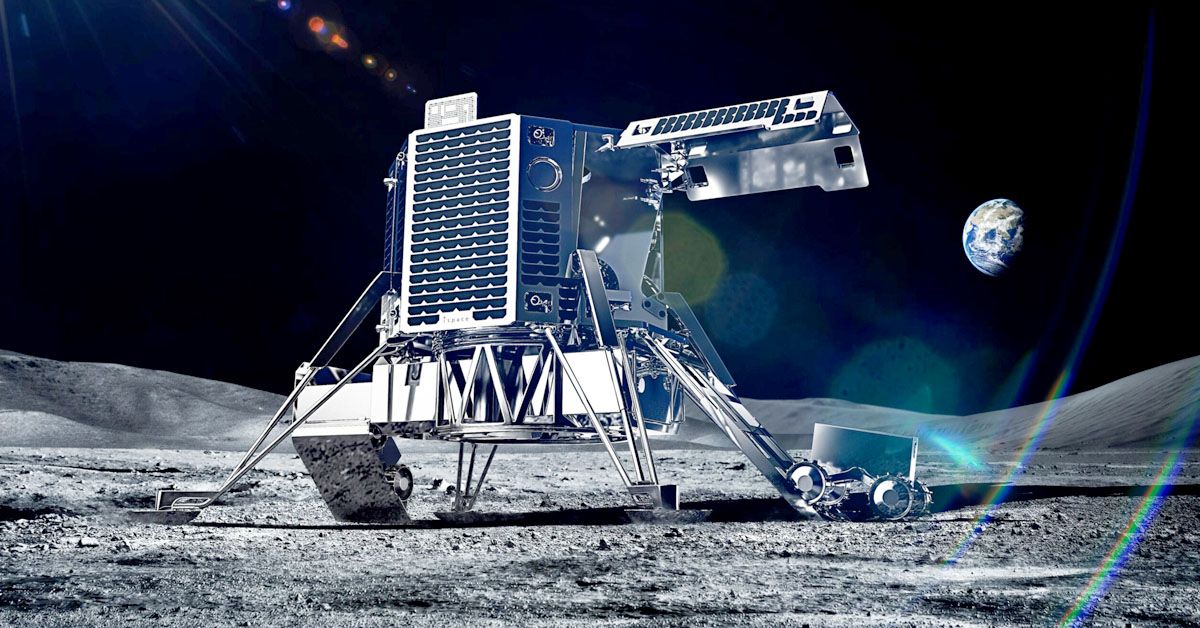In an unprecedented incident that shook the world of space exploration, a lunar lander owned by Japanese private company ispace ended in a disastrous crash landing on the Moon. What was meant to be a triumph, the first privately-owned lander softly touching down on lunar soil, turned into a hard lesson in the unforgiving nature of space travel.
Let's unfold the dramatic story of the ispace Hakuto-R M1 mission, its surprising and unfortunate end, the revealing investigation that followed, and the company's unwavering resolve to learn from this setback and venture into the unknown once again.
The Downfall of ispace's Hakuto-R M1 Lunar Lander
The Hakuto-R M1 lander, a prestigious project by the Japanese company ispace, met an abrupt end when it crashed onto the moon's surface. Lifted into the great expanse of space atop a SpaceX Falcon 9 rocket from Cape Canaveral Space Force Station in Florida on December 11, 2022, it was intended to mark ispace's debut as the first private company to achieve a lunar landing.
However, a miscalculation spelled disaster for the lunar lander. As it descended toward the moon, the lander was tricked by a cliff, making it believe it was at zero altitude. In reality, the lander was hovering at a height of about 3 miles or 5 kilometers.

Unaware of the remaining distance to the surface, the lander prematurely slowed down and eventually ran out of fuel. This fatal miscalculation transformed what should have been a controlled descent into a free fall, causing a hard collision with the lunar surface.
This unfortunate incident took a toll on ispace's reputation and finances. The lander was carrying a multitude of payloads, including a two-wheeled transformable robot from the Japanese space agency, all of which were lost in the crash. The repercussions were felt back on Earth as the company's shares suffered a significant drop of 20%, reflecting the gravity of the situation.
The Investigation into the Crash
Following the incident, a comprehensive investigation was launched. The primary goal was to understand the precise circumstances that led to the downfall of the Hakuto-R M1 lander.
After meticulous analysis, it was determined that the lander had flown over a crater rim that was approximately 1.8 miles or 3 kilometers higher than the surrounding lunar surface. This unexpected geological feature resulted in the lander misjudging its altitude.

ispace demonstrated resilience in the face of adversity. Acknowledging the findings, the company expressed determination to learn from the failed mission. It stated that although the lander didn't accomplish a soft landing, valuable insights were gleaned about the harsh realities of lunar exploration. ispace is now devoted to implementing improvements, considering these lessons for future missions.
NASA's Lunar Reconnaissance Orbiter Captures The Aftermath
NASA's Lunar Reconnaissance Orbiter (LRO) has been a constant eye in the sky, capturing lunar surface images since 2009. It has documented several lunar impacts over the years, including the crash of Israel's Beresheet lunar lander.
The LRO turned its lens towards the crash site of Hakuto-R M1, providing a detailed view of the aftermath. In a series of ten images around the estimated landing site, the Orbiter's camera captured the impact site and scattered debris. Unusual surface changes and debris pieces, indicated by bright and dark pixels, stood out in the before-and-after views of the landing area.
This isn't the first time the LRO has witnessed the aftermath of a lunar crash. However, each incident adds to the collective understanding of the challenges posed by lunar missions, reinforcing the idea that space exploration is an enterprise rife with risk and uncertainty.
Looking Ahead: ispace's Future Plans
Despite the setback, ispace isn't backing down. The company has its eyes set on two more missions, keen on applying the lessons learned from the failed attempt. While the timeline for these ventures is uncertain, the determination to succeed is not.
The founder and CEO of ispace, Takeshi Hakamada, remains optimistic about the company's future. He has shown faith in the potential of his team to improve upon the identified landing issue. His confidence is a beacon of hope, symbolizing the indomitable spirit of ispace, a company on a journey to make history in private space exploration.













